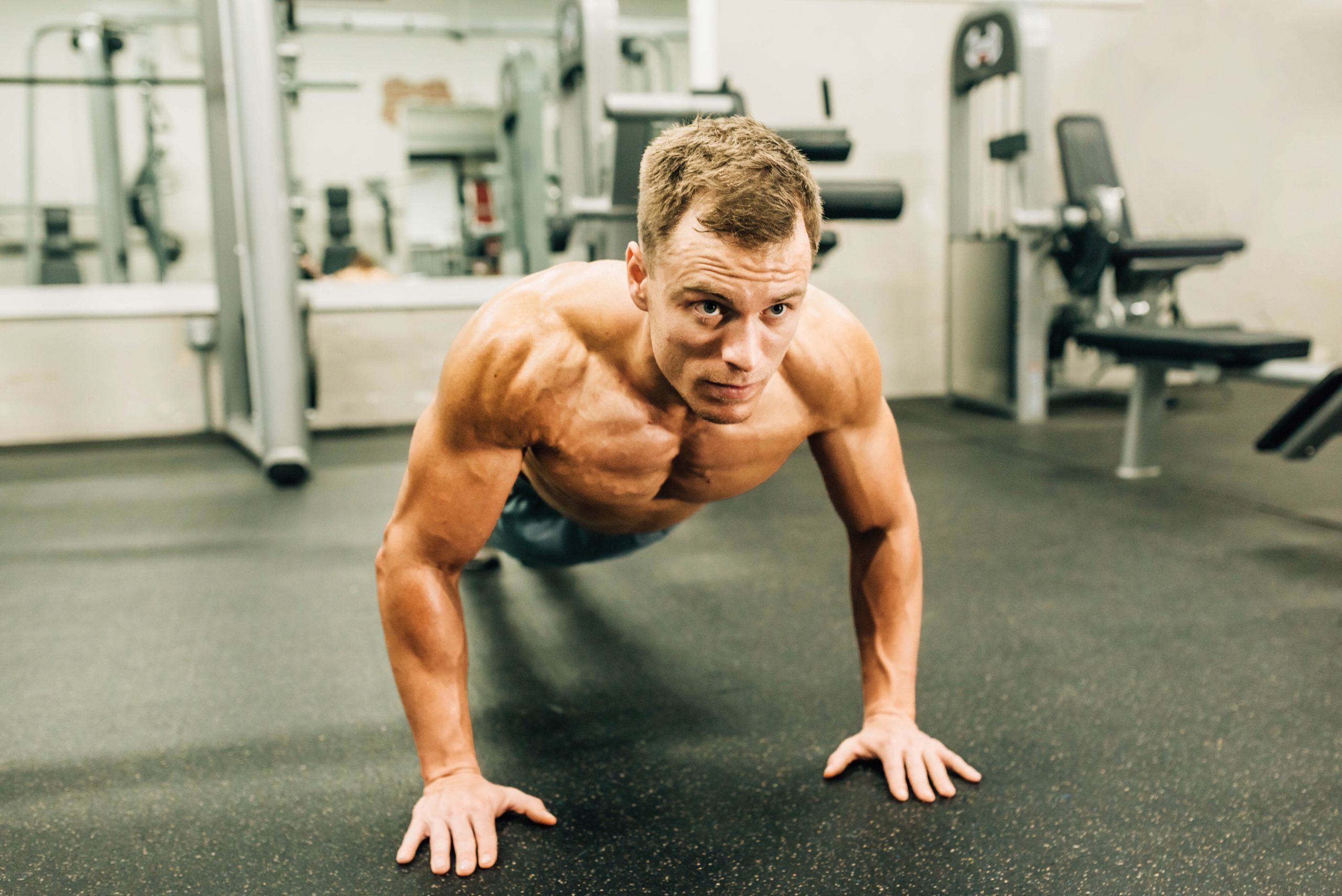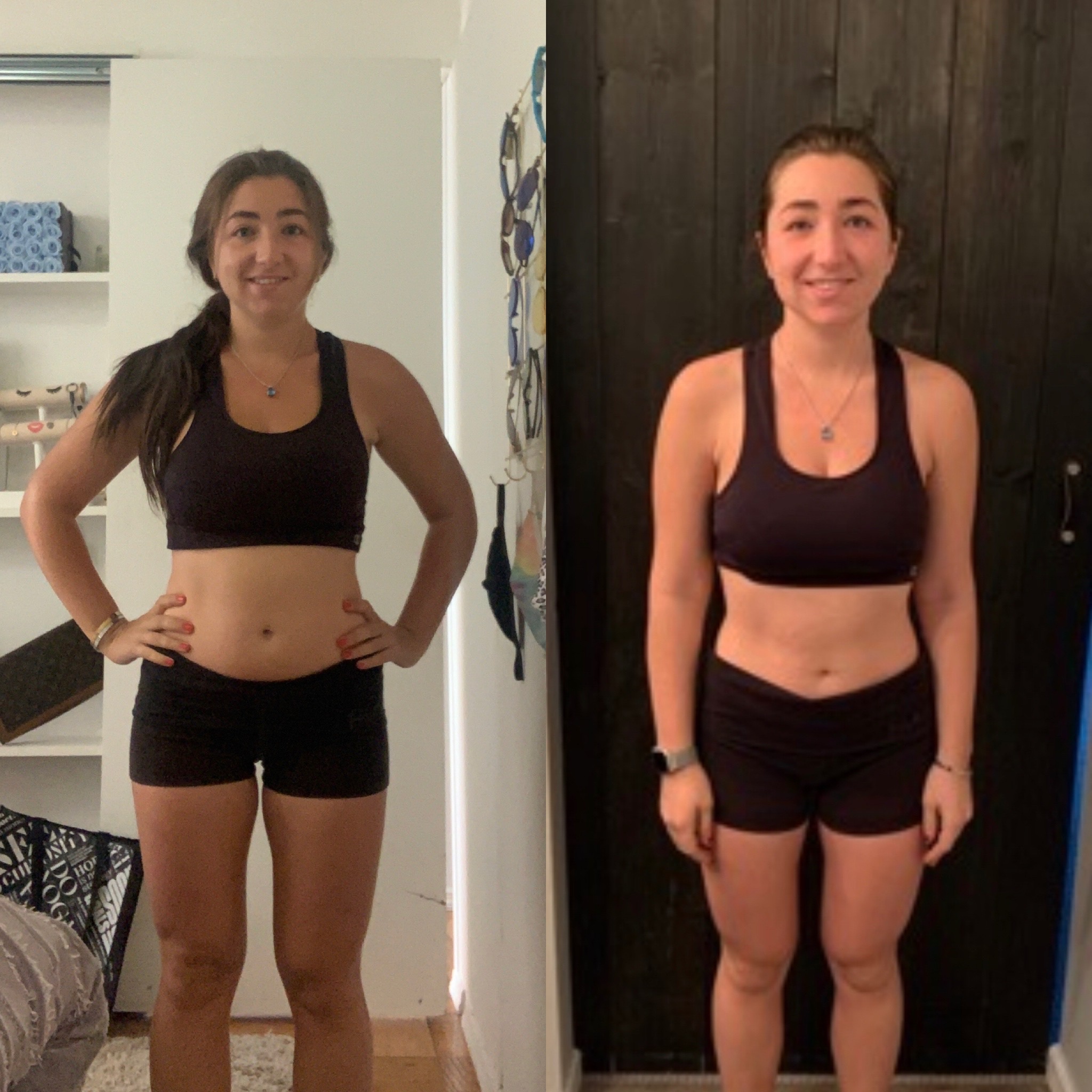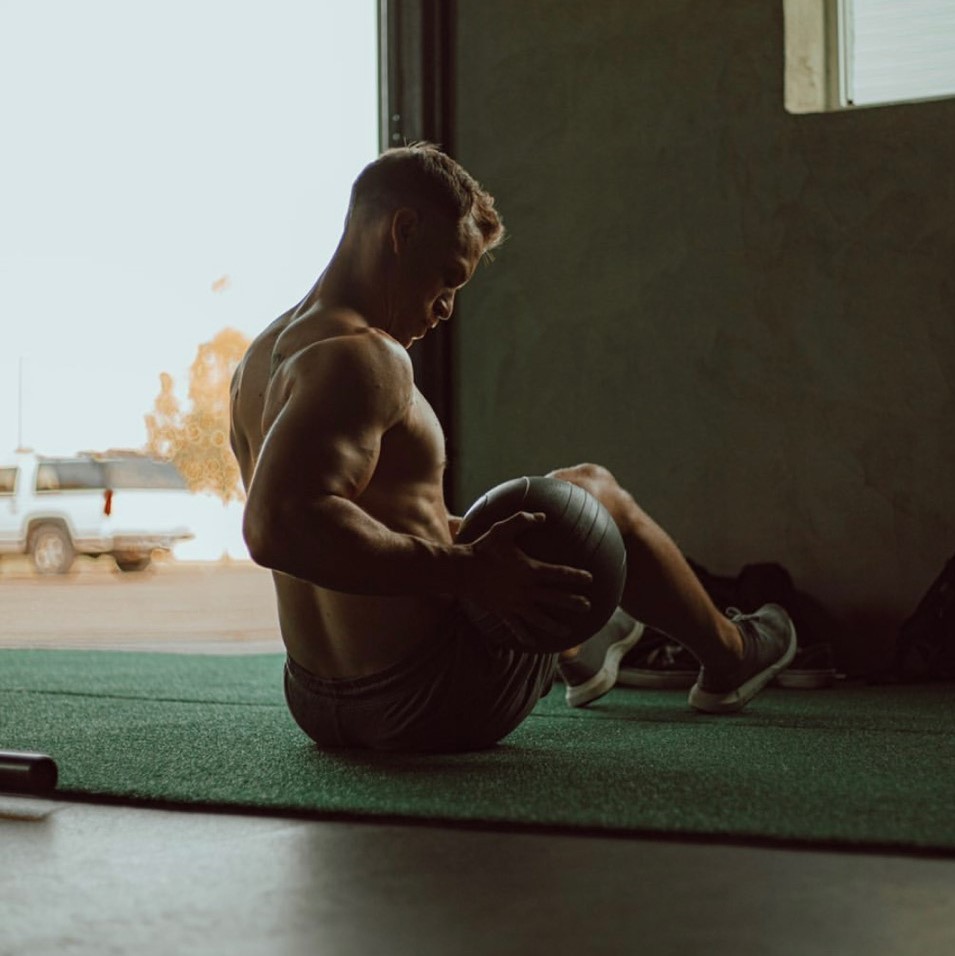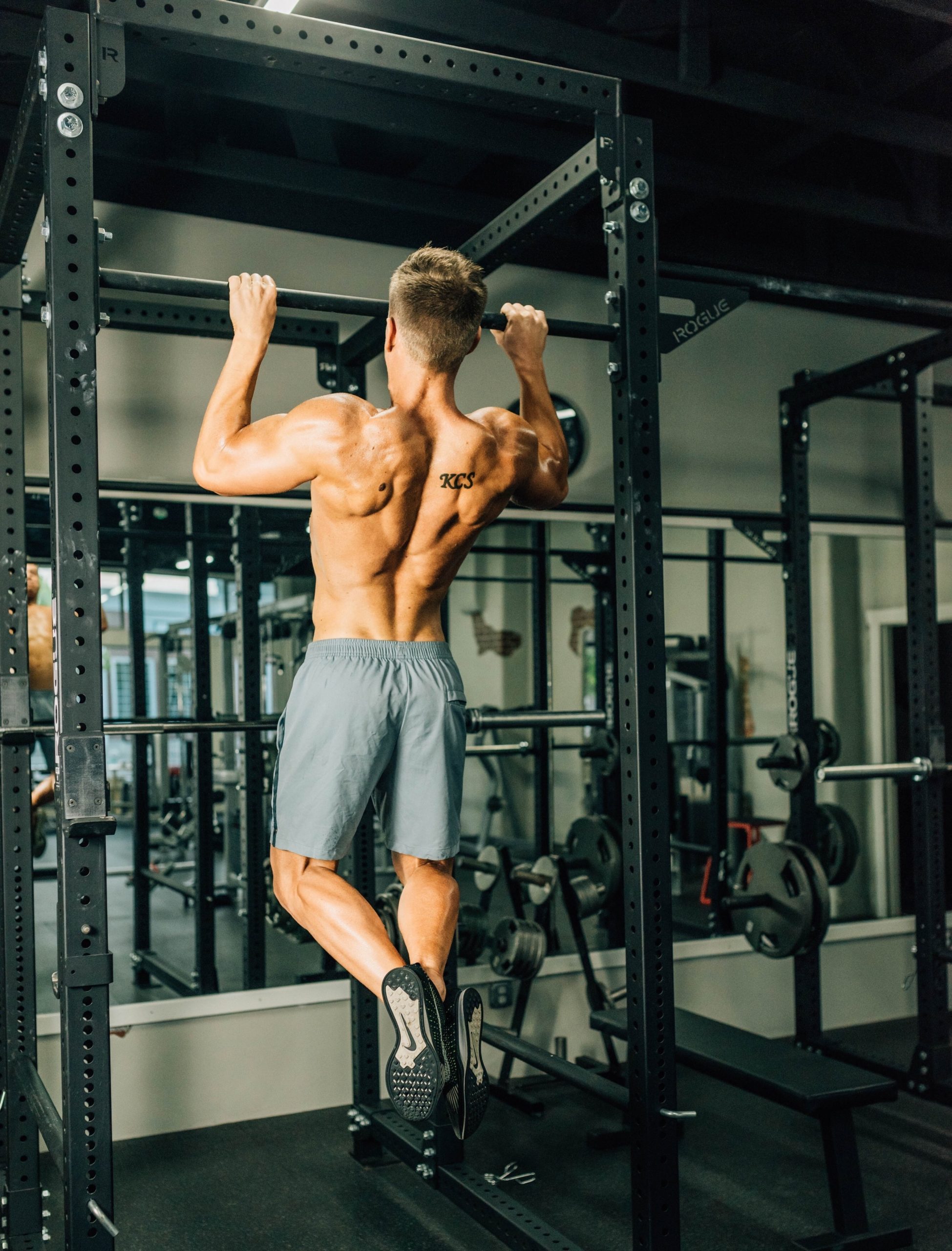Have you ever wondered if you’re setting up your workouts as effectively as you could be to reach your goals?
Last week, I dropped an in-depth blog on how to set up your training program as a whole – The Building Blocks to a Result Based Training Program.
This week, I’m going to show you how to structure the workouts inside that program. I’m even going to gift you a workout from one of my programs and show you how to progress in it over a 4-week period, so stick around.
First, let’s touch on what happens inside a lot of workouts that’s, let’s shall we say, less optimal:
Trying to sweat as much as possible throughout the entire session.
Starting with arm curls and then moving on to bench press. (isolation before a compound)
Doing a taxing cardio session before a strength session.
Jumping directly into a heavy first set with no warm-up.
Performing jumping jacks in between each lift.
I could keep going, but for time’s sake, you get the picture.
If you can relate to any of these, I’m not here to discourage you, but rather help you get more from your efforts. While just getting into the gym is a far better alternative than sitting home making excuses, there are a few things you can adjust to make things more effective, which in turn will help you make better, lasting progress.
As my Gramps says – “Anything worth doing, is worth doing right.”
With that said, let’s hop into it:
Objective 1: Elevating Body Temperature
First and foremost, you need to warm up – literally! Raising your body temperature will help prevent injury, loosen up, situate music (most important), and finish the last swallows of your pre-workout (second most important).
Hop on a treadmill, spin bike, or elliptical for a quick 3-5 minutes before jumping into the weight room.
Don’t think of this as cardio. You aren’t going hard or “working out” here. Find a light – steady pace that does just enough to get your heart rate slightly up and cause a rise in body temperature, but not enough to exhaust you in 3-5 minutes. For myself, this is around a 3-4 mph pace on a treadmill.
Objective 2: Dynamic Stretching / Priming
Gone are the days of static hold stretches, this has been proven to make you weaker before lifting. Instead, shifting focus to some dynamic / priming work and pushing a little blood into the muscle groups you’re going to be using, as well as the opposing muscles, will leave you in the best state to take on your first big lift of the day.
I like to program these in a circuit fashion of a quick 2-3 rounds. Again, we’re not looking to exhaust the muscle or brain here, but rather warm up the joints and get the blood flowing in the correct areas so you’re ready to perform at your best in the coming lifts.
An upper body Dynamic/Prime could look like this:
(2-3 rounds)
-Arm Circles – 10 each arm (forward and reverse)
-Cross Body Arm Slaps -10
-Banded Pull-Aparts – 10
-Banded Chest Press – 10
-Banded Row – 10
A lower day could look like this:
(2-3 rounds)
-Leg Swings – 10 each leg (side to side and front to back)
-Bear Squat – 10
-Banded Glute Bridge – 10
-Banded Face Pulls – 10 (if squatting)
-Banded Lat Pull Ins – 10 (if deadlifting)
Now that the joints are lubed and muscles are warm (around 7-8 mins after arriving to the gym), the training begins.
Objective 3: Main Compound Movement
The first stimulating exercise of the day will generally be the heaviest movement that activates the most amount of muscle through multiple joints – aka a compound exercise. A variation of either the squat, deadlift, horizontal press, vertical press, horizontal row, or vertical press that you create progressive overload in throughout 4-12 weeks.
Pick a movement variation that allows you to work on the muscle groups you want to improve the most, or a specific exercise that you’d like to improve the most. The reason this movement is done first is because it’s when you’re freshest in the workout, which means you’ll be able to lift the most amount of weight.
The main goal here is progressive overload through more weight, more reps, more sets, or a combination of them all from week to week in anywhere from the 3-10 rep range dependent upon the individual and the goal:
3-4 reps = dominantly strength
5-7 reps = muscle & strength
8-10 reps = dominantly muscle
Objective 4: Accessory Compound Movements
The accessory movements will be some sort of compound exercise variation as well that are performed in rep ranges slightly higher than the main compound movement was. Generally, in the muscle building range of 6-12 reps. I’ve found it best to switch these exercises out every 4 weeks to add variety and keep things from getting stale in your training.
The main objective of the accessory exercises is to compliment the main compound movement through a different angle/variation, or even to hit an opposing set of muscle groups that wasn’t activated through the main compound movement dependent upon the split that the workout is set up inside of.
Example for an Upper Body Day:
Main compound movement: Barbell Overhead Press
Accessory movements:
-Wide Grip Pull Down
-DB Chest Press
Example for a Push Day (Chest, Shoulders, Triceps):
Main compound movement: Bench Press
Accessory movements:
-Incline DB Press
-Seated Machine Shoulder Press
Objective 5: Isolation Work
The isolation movements bring us to the end of the lifting portion of the workout. These are the exercises where a single muscle group is focused on – aka a single joint exercise. Generally, in a higher rep range of between 8-20 reps.
Logically, they’ll be exercises for body parts that you’d like to laser-focus in on even further to maximize lean muscle growth. These are the movements where focus shifts more from weight used to “mind-muscle connection” as increases in weight will be harder to come by because you aren’t able to create as much leverage in your body on an isolation exercise as you are on a compound exercise.
Not to say you shouldn’t be aiming to create progressive overload, but looking at alternative methods to overload the exercise such as sets performed, time under tension, and higher intensity techniques that are performed closer to failure are most effective and often more fun.
Examples:
Hamstring Nordic Curls –
Week 1: 2 sets of 8-10 reps
Week 2: 3 sets of 8-10 reps
Week 3: 4 sets of 8-10 reps
Barbell Curl Myo-Reps –
Complete one set to failure between 12-20 reps with good form. Rest 5 seconds, perform 3-5 more reps. Rest another 5 seconds, perform 3-5 more reps. Repeat 5 second rest, 3-5 rep sequence until you can’t perform at least 3 reps with good form. Be ready for the burn!
Glute Bridge EMOM x15
Set a timer for the prescribed number of minutes. Perform 12-15 reps at the top of each minute until the timer runs out.
Week 1: 4 minutes
Week 2: 5 minutes
Week 3: 6 minutes
Objective 6: Cardio - Metabolic Circuit, HIIT, or LISS
To finish off the workout as a cherry on top, throw in a little something to burn some additional calories and keep your cardiovascular system at an optimal level.
It’s important to understand that cardio isn’t a necessity to lose fat. The amount of calories and protein you’re consuming will control that outcome far more than the workouts you’re doing, but to be able to eat slightly more calories each day, or create a bigger deficit inside the diet, adding some form of metabolic circuits, HIIT, or LISS can be helpful.
Not to mention it trains arguably the most important muscle of them all – the heart.
Also, don’t forget that progressive overload plays a roll in ALL forms of training, including cardio.
Here are examples of each:
Metabolic Circuit
Complete list of exercises in a circuit fashion until completing the list. Rest 45-60 seconds between each round.
-Kettlebell Swing, 10 reps
-Wall Balls, 10 reps
-Rower or Assault Bike, 10 calories
Week 1: 4 rounds
Week 2: 5 rounds
Week 3: 6 rounds
HIIT (High Intensity Interval Training)
Spin Bike, Assault Bike, or Elliptical
Week 1: 10 seconds all out every 90 seconds – 10 rounds
Week 2: 10 seconds all out every 80 seconds – 10 rounds
Week 3: 10 seconds all out every 70 seconds – 10 rounds
LISS (Low Intensity Steady State)
Walk Outside, Treadmill, Elliptical, or Spin Bike
Week 1: 25 minutes steady pace
Week 2: 30 minutes steady pace
Week 3: 35 minutes steady pace
HIIT & LISS days could also be done on “rest days” instead of after a workout for time sake if needed.
In Closing:
Well, there you have it. An exact breakdown of a workout to help you get stronger, build lean and defined muscle, and lose fat all in one.
Don’t get confused and think of this as the “only” way to set up a training day, but from personal experience, 100’s of clients, and through evidence based research, this is what I’ve found to work best for results, sustainability, and enjoyability.
If you’d like to receive an upper and lower body workout that are both taken from a Lost & Lifting programs for both male and female clients to create strength, lean muscle, and fat loss using the exact outline in this blog – CLICK HERE to download it for free.
The workout will walk you through how to set up your progression schemes inside a 4 week period, provide notes when things need to be explained a little further, and provide you with videos for each exercise so you know exactly what to do inside of each workout.









